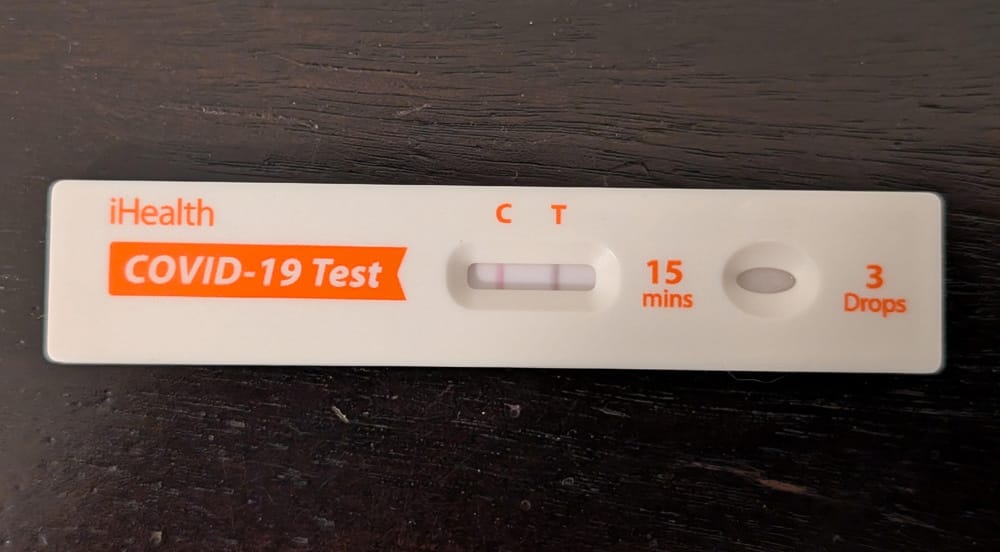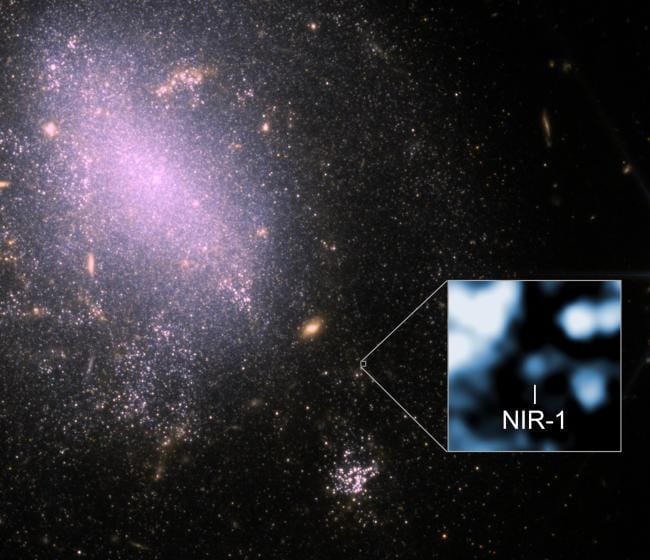- Bad Astronomy Newsletter
- Posts
- I got COVID, and a fast radio burst progenitor found?
I got COVID, and a fast radio burst progenitor found?
So, some good and bad news.

The Trifid Nebula and environs. Credit: RubinObs/NOIRLab/SLAC/NSF/DOE/AURA
October 14, 2025 Issue #944
Reminder: No Kings rally on 10/18/25
Help save democracy in the US
On Saturday October 18, there will be a nationwide rally to protest Trump and his far-right takeover of the US government. It’s called the No Kings rally and it’s likely happening near you if you’re in the States. All the info you need is at the No Kings site. I’ll be at the one in Charlottesvile waving a flag and getting passersby to honk. Maybe I’ll see some of you there!
Welp, I finally got COVID
Dangit
As y’all might know, I’ve been a strong advocate for vaccinations since forever, and also for masking since the pandemic started in 2000. I’ve made sure I get the booster every time it’s offered, and I always wear a mask when I’m out in the world (with very few exceptions, like restaurants with adequate ventilation and the like).
This has stood me well; I have been a NOVID — someone who never got COVID — for five years now, despite being in situations where people around me got infected.
That ended last week. The story is complicated, but the bottom line is my wife was on travel to support an ill family member, and got it from being around another family member who had it without knowing (who almost assuredly got it while visiting the hospital). She didn’t show symptoms until two days after getting back home here, and by then it was too late. I got it.

Sigh. Credit: Phil Plait
I’ll add I’m fine now, but yowza, it sucked. I had very mild symptoms (basically a slightly tickly throat) for about a day, then woke up the next day extremely ill. Massive body aches, a headache that Tylenol couldn’t touch, very painful chills, and a high fever. I was able to get some Paxlovid that day and by the next I was starting to feel better*. My symptoms are mostly gone now, with the exception of some sinus drainage which is annoying but hardly worth worrying about compared to how I felt last week.
Only being really sick for a day was bearable, but that was not a great day. I’m relatively healthy to start with so I could take it, but for someone who may have other health issues it could’ve been much more serious. I still see people claiming getting COVID is like getting a cold, and these people are wrong. Even ignoring the debilitating fever, the risk of lasting effects is still there, and still not well understood.
My point? Get vaccinated. Be careful. And wear a mask! Remember the year influenza — a very serious illness — was stopped cold? That was largely due to masking. So it’s not just COVID that masking helps. Until last week I hadn’t been sick at all in five years, so I’m not going to stop masking now. It protects you, and it protects those around you.
* I’ll note that the insurance doctor I talked to assured me it wouldn’t shorten the duration of symptoms, but I was only terribly sick for a day, as was my wife and her mom as well, and all of us got Paxlovid. Some studies show it does shorten symptom duration for people at higher risk (like being over 60, immunocompromised, etc.) and we fall into that category. Your kilometerage may vary. Given that it does seem to help prevent long COVID, it was a good bet for us to take it.
Fast Radio Burst companion found?
JWST found something near a massive but brief explosion, and it might have been the trigger
Fast Radio Bursts, or FRBs, remain annoyingly difficult to figure out.
These are incredibly powerful yet incredibly short bursts of radio energy coming from deep space. A few have been found in our own Milky Way galaxy, but most come from other galaxies. The problem with detecting them is that the bursts last for literally less than a millisecond. Yet, despite their brevity, they pump out thousands of times the energy of the Sun, and that’s just in radio waves.
The brief duration implies the source object is small; if it’s big the burst will have a longer duration since nothing can move faster than light, and even a star is several light-seconds across. So we’re talking about something that must be compact, just a few kilometers across! That implies a neutron star — they’re only a couple of dozen kilometers wide, and can have powerful magnetic fields that are known to create pulses of radio waves.
But it’s still not clear if they’re to blame, and even if they are what cause the blasts in the first place (one idea: asteroids smacking into neutron stars at a large fraction of the speed of light).
On March 16, 2025, a powerful FRB was detected using the CHIME radio telescope in Canada. Dubbed FRB20250316A, its position was pinpointed as coming from the outer parts of NGC 4141, a spiral galaxy about 130 million light-years from us. This was the brightest FRB ever seen; in fact it was nicknamed RBFLOAT, for Radio Brightest Flash Of All Time (or, of course, “root beer float”, which I strongly suspect is the term they came up for it first).
On May 19, 2025, a team of astronomers used JWST to take deep images of NGC 4141 at the location of the burst, hoping to see something—anything—there that could help us understand FRBs [link to journal paper].

NGC 4141 seen by JWST, with an inset showing a magnified view of the location of the FRB. The location of NIR-1, the suspected companion to the burst, is shown. Credit: NASA/ESA/CSA/CfA/P. Blanchard et al.; Image processing: CfA/P. Edmonds

Subscribe to Premium to read the rest.
Become a paying subscriber of Premium to get access to this post and other subscriber-only content.
Already a paying subscriber? Sign In.
A subscription gets you:
- • Three (3!) issues per week, not just one
- • Full access to the BAN archives
- • Leave comment on articles (ask questions, talk to other subscribers, etc.)

Reply